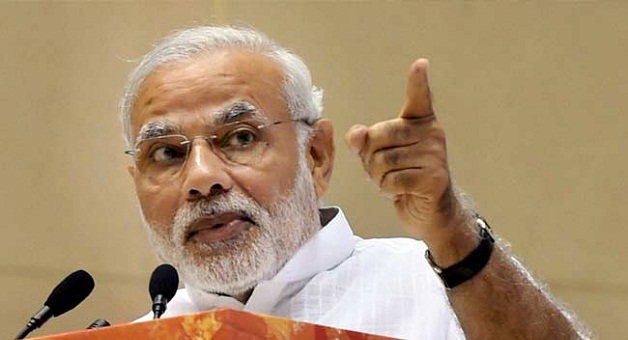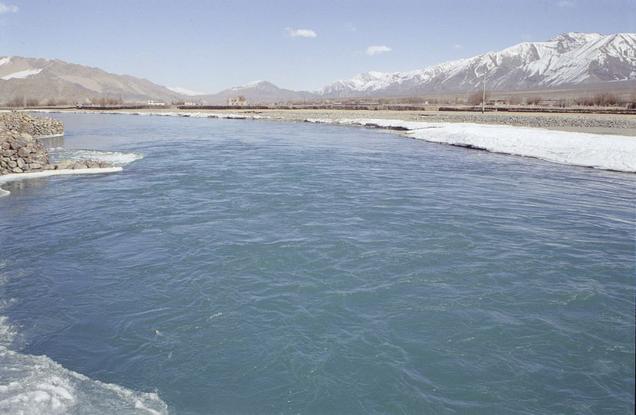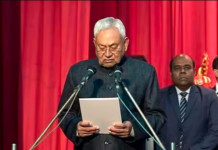PM settles on ‘water’ as a powerful diplomatic weapon to put neighbors in place.
Indus has always been a point of conflict between India-Pakistan and Indian PM plans to use it to the country’s advantage. Having said ‘Blood and Water cannot flow together‘ in past, BJP officials look forward to reviewing the 1960 Indus Water Treaty (IWT) that survived nearly 6 decades of mutual bitterness. India had never used this pact for leverage earlier but, considering the latest Pak-caused bloodshed along LoC, the government look towards hydroelectric projects as an alternative to vindictive military aggression. Though it isn’t clear how aggressive the capital will be in terms of using the waters. Nevertheless, in an attempt to prevent post-war economic debacle, India may have to face a deliberate change in equation with not only Pakistan and Gulf, but also with China, who clearly has an upper edge with Sutlej, Indus and Brahmaputra originating in its homeland. It’s certainly a fate-changing risk for India.
The Significance of Indus Waters Treaty for Pakistan
Effectively surviving three major wars, the widely-praised IWT sponsored by the World Bank, oversees the flow of Indus and its 5 major tributaries across Indo-Pak region. While India controls three eastern rivers namely ‘Sutlej’, ‘Beas’ and ‘Ravi’, Pakistan is in charge of ‘Chenab’, ‘Jhelum’ and ‘Indus’. India utilizes just 20% of the water, in line with the treaty but, the amount is insufficient for catering to the requirements of 2.86 million natives (Census 2011) in Kashmir Valley. Though India has 7 major rivers in the country to suffice its needs, Pakistan is on sharp end of the knife. Blocking Indus waters can result in famines and droughts throughout the country, which is a major concern for Pak government.
Should India Interrupt Indus Waters, How will this Affect Pakistan?
Reducing just 40% to 50% of water flow to Pakistan could result in economic unrest for agriculturists and political aggression against military officials in Pak.
- Approximately 192 million Pakistani natives (amounting to three-quarters) of country’s total population are dependent of Indus for domestic usage. Shortage of water will result in high mortality rates.
- It could undermine 25% of Pak agriculture industry that accounts for 21% national GDP and employs 43% natives.
- Water-shortage could lay adverse effect on wheat and cotton production since irrigated lands in Sindh-Punjab province utilize 95% of Indus waters for irrigation. Thus, hampering the trade and manufacturing potential of Pakistan.
- Many elite companies like Sherif, Chinote and Bhooto accumulate wealth from Punjab province. Famine and droughts can severely affect their business and social status.
How will It Affect India?
- India uses just 4% (or 5.4 Million Acre Feet) of the permitted 20% limit due to lack of adequate storage. In other words, it is being liberal to Pakistan by giving it 16% of its share. The annual average flow of rivers is 33 million MAF, with 1 MAF amounting to 12,33,480 litres of water. If India plans to use the entire 20% of waters, it can effectively use it for domestic purposes, agriculture, power generation, flood control and navigation. We cannot imagine the total amount, should India plan to use entire 33 MAF.
- India has planned 3 dam projects: Pakal Dul Dam on Marusadar, Bursar Dam in Kishtwar district and Swalkot on Jhelum rivers to tap the potential of Western rivers. Using entire water of these rivers can help India generate approx 18,653 MW power that could affectively solve existing power crisis in northern states.
- IWT does not lay provision for either of the two countries walking out of the pact. Should India want to abrogate it, they can do so in accordance with the ‘1969 Vienna Convention of the law of water treaties’, which states that every state possesses the capacity to conclude treaties, if the circumstances arise.
- Dissolving the treaty could severely affect our trade relations with China. Should China decide to stop Brahmaputra waters, they’ll have to build multiple canals for controlling its flow. It could take about 2-3 decades. Meanwhile, this heavy amount will result in tremendous floods during monsoon season.
- Moreover, China is in control of Tibet, where 10 major Asian rivers originate. This could severely affect 25% of the domestic population. Tibetan damns are disastrous for India, considering environmental issues and local protests associated with it. In a way, this is the right time for India to raise the Tibet issue.
With tensions running high between Pakistan, India and China, Indian government insists they won’t fully exploit the rivers, but they would use a part of the water for domestic consumption. India would look up to World Bank for funds to construct dams, which may result in the bank trying to conciliate both the parties. Nevertheless, if the rumors are true, both India and Pakistan have silently initiated the proceedings in line with treaty. New Delhi refusing to have a dialogue meeting with Islamabad has left the neighbors wondering on the possible outcomes of PM’s groundwork for ‘water war’.













